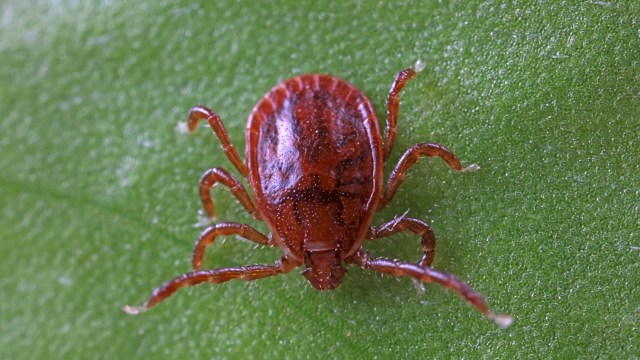State officials confirm first sighting of invasive, disease-carrying tick species — here's what to look for

Residents in Oklahoma should be on alert after an expert at Oklahoma State University Extension published research earlier this month that revealed the discovery of an invasive tick species that poses a danger to humans and animals alike.
What's happening?
According to findings published by Jonathan A. Cammack, Ph.D., an assistant professor in the Department of Entomology and Plant Pathology at Oklahoma State University, the Asian longhorned tick (also known as Haemaphysalis longicornis) was "identified from cattle in Mayes County, in northeast Oklahoma."
The species is native to East Asia and was first discovered in the United States in 2017 on an infested sheep in New Jersey. It has since spread south and west, with 21 known states and Washington D.C. reporting sightings.
Cammack described Asian longhorned ticks (ALT) as "three-host ticks," as they feed on animals ranging from wildlife to pets and livestock. However, it was noted that "ALT has been collected from nearly 150 host species, including humans."
One of the key reasons for the spread of ticks is the ever-changing climate creating environments for them to thrive. Cammack stated: "Temperature, humidity, and rainfall are the most important environmental factors regulating the distribution and spread of the species across North America."
Why is this important?
The ALT poses a serious threat to livestock, particularly cattle. According to Cammack: "Tick populations on cattle can become so numerous that the animals become stressed, lose weight, reduce milk production, become anemic, and in some cases, die."
Watch now: How Microsoft's Surface laptops became some of the most repairable devices on the market
Also, Cammack called the ALT "a competent vector of numerous pathogens that can cause disease in humans," namely Rocky Mountain spotted fever, Heartland virus, and Powassan virus.
The spread of these ticks is particularly concerning because of their ability to reproduce without mating. Cammack reported that females can lay up to 3,000 eggs, and this can "lead to large populations occurring in the environment or on animals in a relatively short period of time."
What's being done about this?
Using insect repellents and treating your clothing and gear with permethrin can help prevent tick bites.
If any changes in behavior or body condition are noticed in animals, they should be checked for ALT. General insect repellents and products approved for tick control can help protect pets. Cammack mapped out the best strategy for protecting livestock.
"For livestock, limit the movement of animals between farms/locations, and thoroughly inspect any new animals that are brought into a herd," the professor said. "Pesticides labeled for the control of ticks on cattle, coupled with cultural control (keeping grass mowed and brush cleared) and reducing the movement of animals, can help form the basis of an integrated pest management program for Asian longhorned tick."
Join our free newsletter for good news and useful tips, and don't miss this cool list of easy ways to help yourself while helping the planet.
State officials confirm first sighting of invasive, disease-carrying tick species — here's what to look for first appeared on The Cool Down.
Welcome to Billionaire Club Co LLC, your gateway to a brand-new social media experience! Sign up today and dive into over 10,000 fresh daily articles and videos curated just for your enjoyment. Enjoy the ad free experience, unlimited content interactions, and get that coveted blue check verification—all for just $1 a month!
Account Frozen
Your account is frozen. You can still view content but cannot interact with it.
Please go to your settings to update your account status.
Open Profile Settings